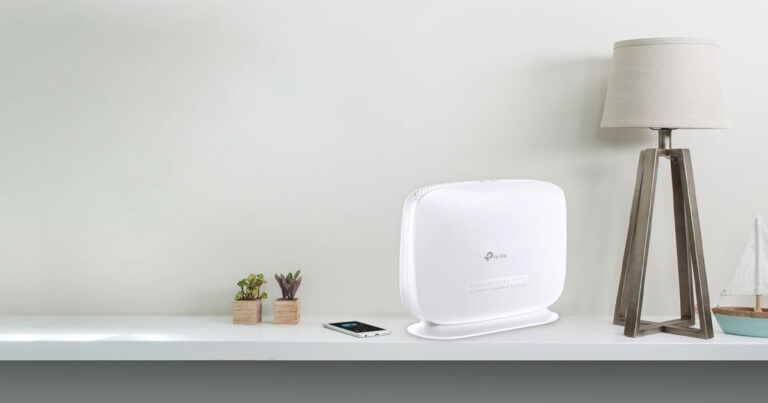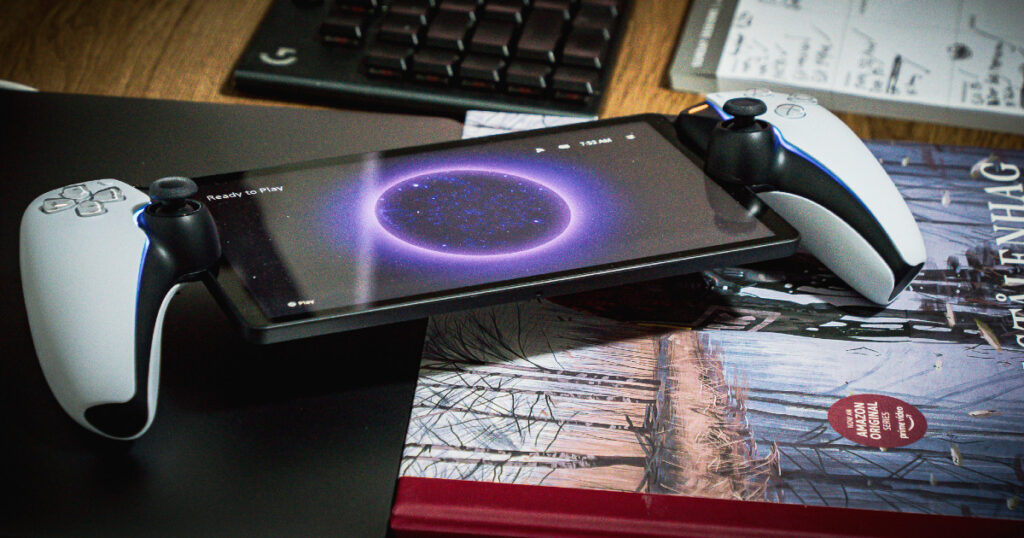Your one-stop spot for all of the essential need-to-know info about TPG NBN in terms of plans, pricing and modems.
TPG NBN internet plans: everything you need to know
Back in the ADSL2+ heyday, TPG quickly found a name for itself as a no-nonsense provider with competitive pricing and unlimited-data plans. Fast-forward to NBN-dominant times and TPG still tends to favour unlimited-data plans and competitive pricing.
In their cheapest form, you get NBN internet via a BYO option. If you don’t mind spending more, you can also nab a PAYG phone service and NBN-compatible modem. Let’s take a closer look at what the current crop of TPG NBN plans has to offer.
TPG NBN plans
TPG is a rare NBN provider that sells plans on all NBN speed tiers, meaning you can sign up for bare-bolts internet on an NBN 12 plan or go all out (if you’re in an FTTP or HFC home) with NBN 1000.
TPG NBN 12 plans
Let’s start with TPG’s NBN 12 plan first, which is really only meant for homes with the most basic internet needs. While these are the most affordable TPG wifi plans on the menu, they're unlikely satisfy the demands of most modern consumers. If you're confident you can get by on one a TPG NBN 12 plan, you can find the all details in the widget below:
TPG NBN 25 plans
NBN 25 is what we consider to be the true entry-level broadband speed tier, which is an affordable way for a couple of users to enjoy most of the activities the internet has to offer at okay speeds. You can see TPG’s cheapest NBN 25 plan below.
TPG NBN 50 plans
NBN 50 is the most popular speed tier in Australia with good reason: it offers a solid mix of speed and versatility without being overly expensive. As far as TPG internet plans go, it's the goldilocks option. Check out TPG’s NBN 50 plan below.
TPG NBN 100 plans
Most metro homes in Australia can sign up for an NBN 100 plan, which offer download speeds up to twice as fast as NBN 50. Because of this, NBN 100 plans are meant for homes with five or more people who likely love to simultaneously stream, game online and download files. This makes it an ideal TPG wifi plan to consider for larger families. Check out TPG’s NBN 100 plan below.
TPG NBN 250 plans
NBN 250 plans are for streaming-heavy, gamer-centric homes or abodes with lots of people who don’t like to compromise on bandwidth when it comes to sharing their ’net. Granted, NBN 250 plans aren't available in everywhere. You'll need to do some research first to see if the high-speed service is available in your area. If it is, then be sure to give the TPG NBN 250 plans below a look:
TPG NBN 1000 plans
The other speed tier available in Australia is also the fastest: NBN 1000. As with NBN 250, these plans are only available to FTTP and select HFC homes. However, the blisteringly fast download speeds they offer are ideal for homes with many inhabitants who all have big bandwidth needs. Check out TPG’s NBN 1000 plan below.
TPG NBN Fixed Wireless
For those in rural and regional areas, TPG also sells NBN Fixed Wireless plans on the NBN 25 speed tier. You can find these plans via the widget below.

TPG business NBN plans review
TPG business NBN plans are only offered on a few key speed tiers but they do include some extras worth considering.
TPG 5G Home Internet
In addition to the above NBN internet plans, TPG also offers a number of home wireless broadband alternatives like 5G Home Internet. Check out the widget below for a round-up of popular TPG NBN alternatives.
TPG Internet Speeds
TPG NBN speeds range from great to decent the higher up the speed tiers you climb. All told, there are six options to choose from:
- NBN12 (Basic I) plans offer download speeds of up to 12Mbps
- NBN25 (Basic II) plans offer download speeds of up to 25Mbps
- NBN50 (Standard) plans offer download speeds of up to 50Mbps
- NBN100 (Fast) plans offer download speeds of up to 100Mbps
- NBN250 (Superfast) plans offer download speeds of up 250Mbps
- NBN1000 (Ultrafast) plans offer download speeds of up to 1000Mbps
NBN providers like TPG tend to advertise the maximum or typical speeds that a given plan could deliver rather than make more specific promises, as the performance of any individual connection can vary widely. For a better sense of how consistent TPG NBN plans are relative to the competition, it's worth looking at reports that compare the provider against alternatives and its own benchmarks.
According to the most recent NBN speed rankings and performance data published by the ACCC, TPG internet plans tended to deliver 97% of maximum plan download speeds during peak usage and 81.4% of maximum upload speeds during the same period.
TPG Internet Bundles
TPG doesn't offer any sort of savings for those who opt to keep both their mobile and internet plan under the same roof, but they do let you bundle a home phone connection with select NBN plans. Check out the widget below for a list of TPG wifi plans that can be bundled with a phone line.
TPG NBN modems
You can BYO modem with the cheapest TPG NBN plans but you can also opt for a preconfigured TPG NBN modem, which will be one of these three options:
- TP-Link VR1600v
- Huawei HG659
- Huawei HG658

Handily, TPG provides configuration guides for the following NBN-compatible modems:
- Netcomm NF4V
- Netgear Nighthawk D7000
- Netgear Nighthawk D7800
- D-Link DSL-4320L
- D-Link DSL-3900
- D-Link DSL-2878
- D-Link DSL-G225
- TP-Link Archer VR900
- Fritz! Box 7390
- Fritz! Box 7490
TPG NBN modem setup guides
TP-Link VR1600v setup
Follow these steps to get online with the TP-Link VR1600v, but also note that not all of these steps may be required as the device should arrive pre-configured:
- Connect the TP-Link VR1600v to a power outlet.
- FTTN and FTTB users should connect a telephone cable to the DSL port and then the other end to the NBN wall socket.
- FTTP, FTTC, HFC and Fixed Wireless users should connect an Ethernet cable to the blue WAN port on the TP-Link VR1600v and the other end to the UNI-D port on the NBN connection box.
- Optionally, connect a telephone handset to the Phone1 port on the TP-Link VR1600v.
- TPG recommends connecting a computer to the TP-Link VR1600v via Ethernet cable for configuration. Alternatively, use the provided WiFi details (on the sticker underneath the TP-Link VR1600v) to connect a device wirelessly.
- Open a web browser and input http://192.168.1.1 into the address bar to connect to the TP-Link VR1600v configuration screen. Use ‘admin’ for both username and password.
- FTTN and FTTB users should click on the ‘Advanced’ tab, then select ‘Network’ and then ‘DSL’. Click the ‘Edit’ button next to the ‘pppoe_ptm_2_0_d’ entry. Now enter your provided TPG username and password details, then click ‘Save’. Click back on the ‘Basic’ tab.
- Optionally, click on the ‘Wireless’ tab if you’d like to change your WiFi network name (SSID) and password. Save any changes.
- Connect the devices in your home via Ethernet or WiFi to get online.
You can find a complete TP-Link VR1600v guide here (in PDF form).
Huawei HG659 and Huawei HG658 setup
Follow these steps to get online with the Huawei HG659 and Huawei HG658, but not all of these steps may be required as the device should arrive pre-configured:
- Connect the Huawei modem-router to a power outlet.
- FTTN and FTTB users should connect a telephone cable to the DSL port and then the other end to the NBN wall socket.
- FTTP, FTTC, HFC and Fixed Wireless users should connect an Ethernet cable to the blue WAN port on the Huawei modem-router and the other end to the UNI-D port on the NBN connection box.
- Optionally, connect a telephone handset to the Phone1 port on the Huawei modem-router.
- TPG recommends connecting a computer to the Huawei modem-router via Ethernet cable for configuration. Alternatively, use the provided WiFi details (on the sticker underneath the Huawei modem-router) to connect a device wirelessly.
- Open a web browser and input http://192.168.1.1 into the address bar to connect to the Huawei modem-router configuration screen. Use ‘admin’ for both username and password.
- Click ‘Start Wizard’ on the next screen then enter your TPG username and password. Click ‘Next’ to continue.
- Optionally, change your WiFi network name (SSID) and password. Save any changes.
- Connect the devices in your home via Ethernet or WiFi to get online.
TPG NBN connection types

NBN plans from TPG are available in metro with fixed-line NBN as well as rural and regional areas via Fixed Wireless NBN. Here’s a quick look at the NBN technologies that TPG sells plans for:
- Fibre-to-the-Premises (FTTP)
- Hybrid Fibre Coaxial (HFC)
- Fibre-to-the-Building (FTTB)
- Fibre-to-the-Curb (FTTC)
- Fibre-to-the-Node (FTTN)
- Fixed Wireless
Those living in metro areas with homes connected to the NBN via fixed-line technologies can sign up for all NBN plans up to NBN 100. Only homes serviced by FTTP and HFC can sign up for TPG’s NBN 250 and NBN 1000 plans. While Fixed Wireless NBN plans are available from other providers in NBN 12, NBN 25 and NBN 50 speed tiers, TPG only sells plans for the NBN 25 option.
TPG NBN plan alternatives
If TPG doesn't have the speeds you're looking for, another provider might. Check out the widget below for a round-up of popular NBN plans ranked by typical speeds.
TPG NBN FAQs
There is no single best plan for the NBN, because the needs, means and options available to any consumer are going to vary based on a number of factors.
However, Reviews.org does regularly round up and rank the best NBN plans based on their value, speed and other criteria. If you're looking to change your provider to one that offers better value or service, it might be worth starting your search with our shortlist. Even if none of our recommended NBN plans end up being the right fit, it should still give you a good sense of what the market looks like.
If you're having trouble connecting to the WiFi router that came with your TPG NBN plan, there are a number of common troubleshooting steps to try.
If you've already attempted obvious fixes like making sure there are no loose cables, it may be worth connecting your modem-router or TPG WiFi gateway to a computer using an standard ethernet cable. Once you've done this, you should be good to open up a web browser and connect directly to the device.
Regardless of whether you're using the TP-Link VR16000v, Huawei HG659 or Huawei HG658, all you need to do is type http://192.168.1.1 into the URL bar and hit enter.
This should take you to a login screen. By default, both the password and username for accessing this interface should be set to 'admin' so logging in should be a breeze. Once you're into the control panel for your TPG WiFi router, you should be able change the network name and password of your WiFi network and access additional information about the status of your connectivity.
While TPG's mobile services rely on a mix of its own infrastructure and that of other providers, the company's NBN plans are built on the same foundation as that of other NBN providers.
This is not to say there are no differences between internet providers, however. Compare any TPG NBN plan against another and you'll find plenty that separates the two in the terms, pricing, quality of service and perks involved.
Related Articles




